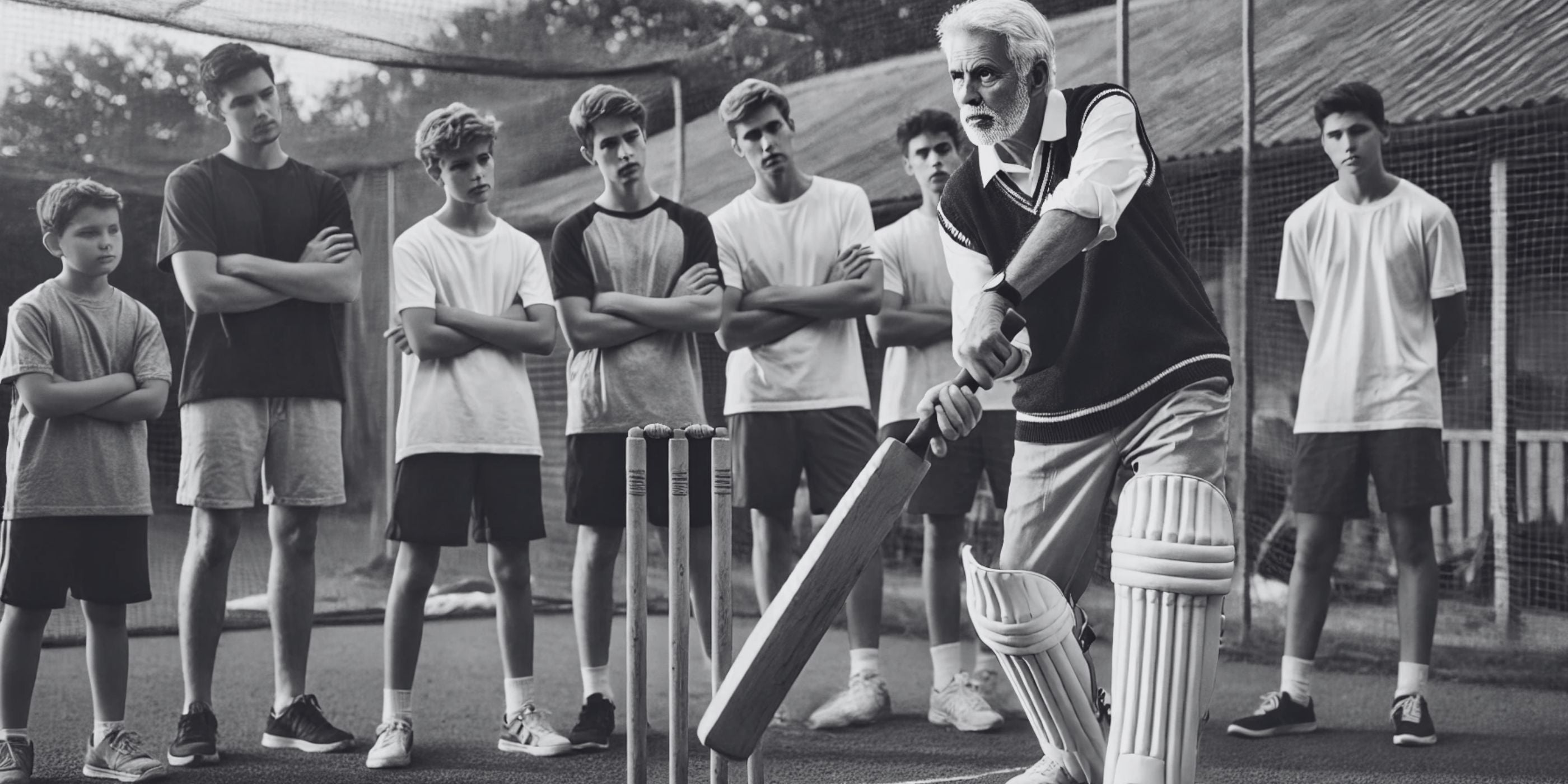
Role of Bat Weight in Batting Performance
The Role of Bat Weight in Batting Performance: A Comprehensive Guide
In cricket, the weight of your bat plays a pivotal role in your performance. Whether you’re a power hitter looking to clear the boundaries or a stroke player relying on timing and placement, the weight of your bat can significantly impact your game. In this blog, we’ll explore how bat weight affects bat speed, power generation, and fatigue during long innings, helping you make an informed decision when selecting your next bat.
Understanding Bat Weight
Cricket bats typically weigh between 1.1 kg (2.4 lbs) and 1.4 kg (3.1 lbs), with variations depending on the player’s preference and playing style. The weight of the bat influences three key aspects of batting:
-
Bat Speed and Timing
-
Power Generation
-
Fatigue During Long Innings
Let’s break down each of these factors in detail.
1. Bat Speed and Timing
Bat speed is crucial for executing shots effectively, especially against fast bowlers. The weight of your bat directly impacts how quickly you can swing it.
-
Lightweight Bats (1.1 kg - 1.2 kg):
Lightweight bats are easier to maneuver, allowing for quicker bat speed. This is ideal for players who rely on timing and placement, such as stroke players. A lighter bat enables faster reactions, making it easier to play late cuts, glides, and drives.
Example: Players like Virat Kohli and Kane Williamson prefer lighter bats for their precise stroke play. -
Heavier Bats (1.3 kg - 1.4 kg):
Heavier bats require more strength to swing quickly, which can slow down bat speed. However, they can still be effective for players with strong wrists and forearms who can generate momentum.
Example: Power hitters like Chris Gayle and Andre Russell often use heavier bats to maximize their hitting power.
Key Takeaway: If you prioritize bat speed and timing, opt for a lighter bat. It will help you react quickly and play shots with precision.
2. Power Generation
Power generation is essential for hitting boundaries and sixes. The weight of your bat plays a significant role in how much force you can transfer to the ball.
-
Heavier Bats:
Heavier bats have more mass, which means they can transfer more energy to the ball upon impact. This makes them ideal for power hitters who rely on brute force to clear the boundaries.
Example: Players like MS Dhoni and David Warner use heavier bats to generate explosive power. -
Lightweight Bats:
While lightweight bats may not generate as much raw power, they allow players to rely on bat speed and timing to place the ball into gaps. This is particularly useful in formats like Test cricket, where placement is more important than power.
Example: Steve Smith uses a relatively lighter bat to focus on placement and accumulation of runs.
Key Takeaway: If you’re a power hitter, a heavier bat can help you generate more force. For stroke players, a lighter bat allows for better control and placement.
3. Fatigue During Long Innings
Batting for long periods, especially in Test matches or long limited-overs innings, can be physically demanding. The weight of your bat can influence how quickly you tire.
-
Heavier Bats:
While heavier bats can generate more power, they can also lead to faster fatigue, especially during long innings. The extra weight can strain your wrists, arms, and shoulders, making it harder to maintain performance over time.
Example: Players like Ben Stokes, who often bat for long durations, sometimes switch to slightly lighter bats to conserve energy. -
Lightweight Bats:
Lightweight bats are easier to handle over long periods, reducing the risk of fatigue. This is particularly beneficial for players who need to bat for extended periods, such as openers or middle-order anchors.
Example: Cheteshwar Pujara, known for his long innings in Test cricket, uses a lighter bat to maintain his endurance.
Key Takeaway: If you’re likely to bat for long periods, a lighter bat can help you stay fresh and maintain your performance throughout the innings.
How to Choose the Right Bat Weight
Choosing the right bat weight depends on your playing style, physical strength, and the format of the game. Here are some tips to help you decide:
-
Assess Your Playing Style:
-
Power hitters: Opt for a heavier bat (1.3 kg - 1.4 kg).
-
Stroke players: Choose a lighter bat (1.1 kg - 1.2 kg).
-
-
Test the Pick-Up:
The pick-up refers to how the bat feels when you lift it. A well-balanced bat should feel comfortable and natural in your hands. -
Consider the Format:
-
Test cricket: Lighter bats are better for endurance and placement.
-
T20 cricket: Heavier bats can help you hit more boundaries.
-
-
Evaluate Your Strength:
If you have strong wrists and forearms, you can handle a heavier bat. Otherwise, stick to a lighter option.
Maintaining Your Bat for Optimal Performance
Once you’ve chosen the right bat, maintaining it is crucial for consistent performance:
-
Knock It In: Properly knock in your bat to compress the fibers and prevent damage.
-
Oil Regularly: Apply raw linseed oil to keep the blade moisturized and prevent cracks.
-
Store Properly: Keep your bat in a cool, dry place and avoid extreme temperatures.
Conclusion
The weight of your cricket bat is a critical factor that influences bat speed, power generation, and fatigue. By understanding how bat weight affects your performance and choosing a bat that aligns with your playing style, you can elevate your game to the next level. Whether you’re a power hitter or a stroke player, the right bat weight can make all the difference in your batting performance.
_____________________________________________________________
All Zee Sports Cricket Bats Pages Links.
https://zeesports.co/collections/elite-bats https://zeesports.co/collections/dsc-cricket-bats
https://zeesports.co/collections/all-cricket-bats https://zeesports.co/collections/english-willow-bats https://zeesports.co/collections/ss-cricket-bat https://zeesports.co/collections/gray-nicolls-cricket-bats
https://zeesports.co/collections/sg-cricket-bat
https://zeesports.co/collections/kookaburra-cricket-bat
https://zeesports.co/collections/zeesports-cricket-bats
https://zeesports.co/collections/new-balance-cricket-bat
https://zeesports.co/collections/spartan-cricket-bat
https://zeesports.co/collections/batting-gloves
https://zeesports.co/collections/bat-accessories
https://zeesports.co/collections/youth-cricket-bats-2
https://zeesports.co/collections/kashmir-willow-bats
https://zeesports.co/collections/a2-cricket-bat
https://zeesports.co/collections/salix-cricket-bat
https://zeesports.co/collections/clearance-bats
https://zeesports.co/collections/ihsan-cricket-bat
https://zeesports.co/collections/slazenger-cricket-bat
https://zeesports.co/collections/reebok-cricket-bats
https://zeesports.co/collections/tape-tennis-bats-1
https://zeesports.co/collections/mb-malik-cricket-bat
https://zeesports.co/collections/hs-cricket-bat
https://zeesports.co/collections/boom-boom-cricket-bats
https://zeesports.co/collections/mids-cricket-bat
https://zeesports.co/collections/hunts-county-cricket-bat
https://zeesports.co/collections/mrf-cricket-bat
https://zeesports.co/collections/puma-cricket-bats
https://zeesports.co/collections/bdm-cricket-bats
https://zeesports.co/collections/ca-cricket-bats
https://zeesports.co/collections/mb-cricket-bat
https://zeesports.co/collections/robinson-cricket-bat
https://zeesports.co/collections/gm-cricket-bats
https://zeesports.co/collections/sf-cricket-bat
https://zeesports.co/collections/fiberglass-bat
https://zeesports.co/collections/matador-cricket-bat
https://zeesports.co/collections/protos-cricket-bat
https://zeesports.co/collections/hard-tennis-bats


Leave a comment
This site is protected by hCaptcha and the hCaptcha Privacy Policy and Terms of Service apply.